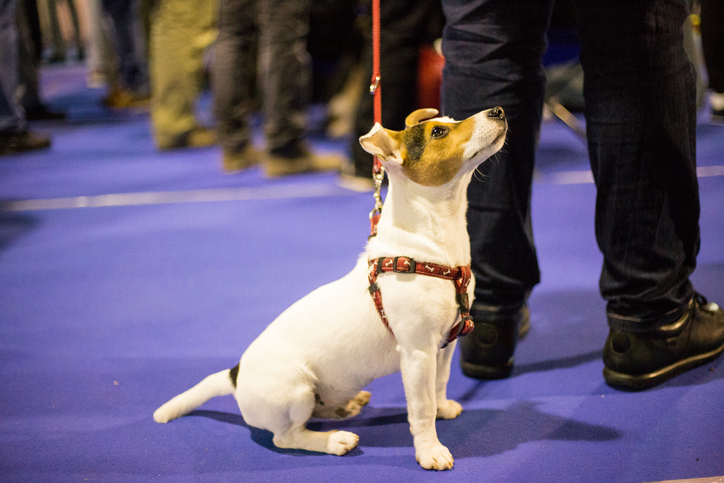We use a dog’s name to identify them.
Not only that, but we use it to precede a command; we use it to gain their attention.
Commands include things like, sit or paw, but they also include potentially lifesaving commands like leave, stop, or wait. When you think about it, a dog’s name is super-important.
If we are using it to gain attention, we need it to be short and snappy.
We need to get straight to the point.
For that reason, the golden rule is to say it once. If your dog doesn’t respond, then the command hasn’t truly been learnt and you need to go back to basics.
One or two syllable names are perfect! They are also easy to intonate. So, we can increase pitch on the second syllable, or just maintain a relatively jovial pitch for the full one syllable.
Why Is A Dog’s Name Important?
Dogs can tell the difference between praise and non-praise.
When they recognize what we say as praise, their reward center in the brain lights up, which has an impact on motivation, cognition and ultimately learning.
This is why dogs thrive on reward-based learning. They learn from the consequence of their behavior. If they experience a positive consequence, they are more likely to repeat the behavior that achieved it.
If they experience a negative consequence, they are less likely to repeat the behavior.
When we say their name in a happy, jovial tone, they perceive it as praise (reward).
This is crucial when first teaching a dog their name. Wait for the dog to give you attention, of their own choice, as soon as they do, say their name and reward them. Repeat. Regularly. You will get to the stage where you can call their name, they will pay attention, then can reward them. When teaching their name initially, don’t use any other commands. You just want them to associate their name with good things happening.
What Is A Poisoned Cue?
Unfortunately, it’s really easy to poison a dog’s name.
When they are ignoring us or doing something they shouldn’t. As they perceive praise, they perceive non-praise, so they know our tone when we are angry or upset.
When we are teaching their name, we need to avoid using low or threatening tones. If you sound angry, why would your dog want to come anywhere near you?
If they are doing something they shouldn’t, you can say “no,” but it’s more important to provide an alternative wanted behavior. For example; your dog is chasing a squirrel.
You could stand there saying “no!” until you’re blue in the face, but it would be much more productive, if you call your dog to you, happy and jovial, and provide an interesting sniff walk on the leash instead!
Have you ever overheard neighbors shouting their dog’s name, over and over again?
Nothing happens, the dog carries on doing whatever they were doing and the owner carries calling the name, until finally stomping across the yard to grab the dog by the collar.
The name means nothing to the dog. This is why it’s important to only use the name as a cue; to gain attention before providing the command for the wanted behavior.
Clear and to the point:
- “Rex, Come!”
- “Rex, Stay!”
- “Rex, Wait!”
You’ll notice that short names are much quicker to cue. This is especially important for dogs who are likely to be easily distracted. Max is much clearer on his commands, much sooner than Wilhelmina.
When choosing a dog’s name, keep it short and snappy.
Make sure it’s easy to intonate. Avoid names that sound like common commands, like Kit, Faye and Beau (Sit, Stay and No).
These will just bring a whole new confusion to your dog training journey! Train their name as soon as you bring them home, use plenty of rewards and sound happy and jovial whenever you say it. However if you take on a dog from someone else, you can change a dog’s name, but obviously you would not make a habit of this@
Remember, if you are using it to get their attention, you need to be more interesting than anything else around them! Say their name once, followed by their trained command. If they don’t respond, go back and re-train the command.
To quote the famous words of Einstein “the definition of insanity is doing the same thing over and over again and expecting a different result!”
Don’t be the insane dog owner!
We hope you enjoyed this article and have fun naming your dog.







Leave A Comment